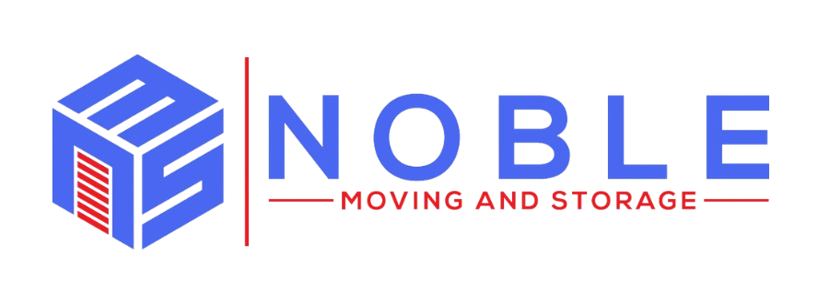
Choosing between DIY and professional movers is like deciding whether to drive yourself on a road trip or take a taxi; one gives you control, the other saves you time and effort.
It’s one of the first big decisions you’ll face when planning a move, and it can shape everything from your budget to your stress levels.
At first glance, doing it yourself might seem more affordable.
But add in truck rentals, packing supplies, time off work, and physical effort, and suddenly the savings may not feel worth it.
On the other hand, hiring professional movers can take the heavy lifting, both physical and logistical, off your plate, but that convenience often comes with a higher price tag.
Did you know that nearly 60% of people choose a DIY move to save money, yet many underestimate the time, tools, and effort it really takes to do it safely and efficiently?
Plus, the average professional move can range from $1,250 to over $4,000, depending on distance and services.
So, before you decide how to handle your move, let’s discuss the real costs, key factors, and common pitfalls so you can choose with clarity, not confusion.
What Is a DIY Move?
In a DIY moving scenario, you’re the planner, packer, driver, and lifter. You handle everything from renting the moving truck to gathering boxes and hauling furniture (and maybe a few generous friends or family members).
If you like managing every detail, this kind of control can be empowering. But if you’re short on time or energy, it may feel more like a burden than a benefit.
What Is a Professional Move?
While a DIY move puts you in charge of every detail, a professional move shifts that responsibility to experienced movers, which can make all the difference in terms of time, effort, and peace of mind.
In a professional moving service, the company typically handles the heavy lifting, transportation, and often the packing as well.
Some full-service movers offer packing supplies, disassembly and reassembly, and unpacking, making the process smoother from start to finish.
Pros and Cons of Each Moving Option
Now that you understand the basic difference between DIY moving vs. hiring movers, the next step is to weigh the pros and cons of each. This decision affects more than just your wallet; it impacts your time, stress levels, and how smoothly moving day goes.
Pros of DIY Moving
Cost Savings: One of the primary reasons people opt for a DIY move is to reduce expenses. You control how much you spend on truck rentals, supplies, and help.
Flexibility and Control: You set the pace, choose your moving date, and handle your items your way, ideal for those who prefer hands-on planning.
Peace of Mind: With a DIY move, only you (and possibly friends or family) will be touching your belongings. That can bring peace of mind, especially if you’re moving valuables or sentimental items.
Cons of DIY Moving
Physical Demand: Lifting furniture, loading trucks, and carrying boxes requires significant effort, especially without the use of professional tools or assistance.
Time Consuming: DIY moving requires days (sometimes weeks) of planning, packing, and labor.
Higher Risk of Damage: If you’re not used to lifting and moving heavy or fragile items and don’t have the right tools, things can easily get scratched, broken, or dropped along the way.
Pros of Professional Movers
Convenience: Hiring movers means you can skip the heavy lifting. They take care of the packing, hauling, and transportation so you can focus on everything else.
Expertise: Trained movers know how to safely transport delicate and bulky items, making the process faster and safer.
Reduced Stress: From planning to execution, professional movers take much of the pressure off your plate.
Cons of Professional Movers
Higher Cost: The cost of hiring movers is usually the biggest drawback, especially when adding packing services or moving long distances.
Less Control: You’ll need to coordinate with the company’s schedule and trust them with your belongings.
Potential Hidden Fees: Some moving companies may charge extra for services such as stairs, long walks from the truck to your door, or unexpected delays.
Key Factors to Consider Before Selecting Your Moving Option
Now that you have a better idea of how DIY and professional moving options compare, it’s time to think about what works best for you. Your decision shouldn’t just be about the price; consider your time, energy, and how complicated your move might be.
Budget and Costs
If keeping costs down is your main goal, going the DIY route might make the most sense. But don’t just look at the base price; add up everything, including the cost of truck rental, gas, packing supplies, tolls, and even the expense of fixing any items that get damaged.
Professional movers cost more upfront, but you’re also paying for their time, muscle, and experience. In some cases, it can save you money in the long run by avoiding delays or damage.
Time Availability
A DIY move takes a lot of time, from packing and loading to driving and unloading everything. If your schedule is already tight, it can quickly become overwhelming.
Professional movers take care of the heavy lifting (literally and figuratively), which can help you get through the move faster and with way less stress.
Physical Ability and Support
A DIY move requires lifting heavy furniture, maneuvering boxes, and possibly navigating stairs or long driveways. If you have physical limitations or limited help, this can be risky.
Professional movers are trained and equipped to handle the physical workload safely and efficiently.
Distance and Move Complexity
The length and complexity of your move can significantly impact your decision. Local moves are often more manageable without professional help.
But for long-distance or complex moves, professional moving services may save you time, stress, and logistical headaches.
Cost Comparison of DIY and Professional Movers
Once you’ve factored in your time, energy, and the complexity of the move, it’s essential to understand the financial side. Comparing DIY moving expenses with the cost of professional moving services gives you a clearer view of what you’re signing up for.
DIY Moving Expenses
Local DIY move: Typically costs between $300–$1,500, depending on truck size, duration, and location.
Long-distance DIY move: The cost can range from $1,000 to $2,500+, especially if overnight stays, gas, and food are involved.
Additional DIY costs
Truck rental: $50–$150/day + mileage fees
Packing supplies: $100–$300 (boxes, tape, wrap)
Moving equipment: $40–$100 (dollies, blankets)
Extra Cost: Fuel, tolls, meals, and hotel stays if traveling far
Cost of Professional Movers
Local professional move: The average cost is approximately $1,250, depending on the size of the home and the services required.
Long-distance professional move: Ranges between $2,500–$6,000, based on distance, weight, and service level.
Potential Hidden Costs
DIY Moves:
- Late truck returns or mileage overages
- Fuel and damage deposits
- Last-minute supply runs
Professional Movers:
- Stairs, elevators, and long carries
- Specialty items (pianos, safes)
- Insurance upgrades or peak-season surcharges
Things You Need for a Successful DIY Move
If you decide to go the DIY route, preparation is everything. With the right tools, supplies, and a solid plan, you can keep things on track and avoid last-minute scrambling. Consider this your essential DIY moving checklist.
Renting a Moving Truck: Choose a truck size that fits your home. Smaller ones are suitable for apartments, while larger homes require more space. Book early, especially during busy seasons, so you’re not stuck scrambling last minute.
Get Packing Supplies: Stock up on sturdy boxes, strong packing tape, bubble wrap, and a few markers. It may not be exciting, but having the right supplies makes packing a lot easier and helps keep your belongings safe.
Use Moving Tools: Dollies, furniture sliders, straps, and gloves are essential for protecting your back and your belongings. These simple tools make a big difference in safety and speed on moving day.
How to Choose the Right Professional Movers
After understanding what DIY moving entails, you may find that hiring professionals is a smarter option. Choosing the right one requires research, attention to detail, and a bit of patience. Here’s what to look for when reviewing professional moving services.
Verify Licensing and Insurance: Before hiring any mover, check that they’re licensed with your state or the U.S. Department of Transportation (for interstate moves). Insurance protects your belongings in case of damage or loss.
Compare Services and Pricing: Not every moving company offers the same kind of help. Some just drive the truck, while others will pack your stuff, provide storage, or handle every part of the move.
Check Reviews and Reputation: Before you book anyone, take a look at what other people are saying. Check out reviews on Google, BBB, or sites like My Good Movers.
Don’t Make These Common Moving Mistakes
Even with solid plans, it’s easy to miss a few small things that can throw off your entire move. These mistakes can save you time, money, and stress.
| Mistake | How to Avoid |
| Skipping Early Planning and Prep | Start planning 4–6 weeks ahead. Create a timeline and book services early to avoid delays. |
| Underestimating the Work Involved | Be realistic about your time, energy, and support. Break tasks into manageable chunks. |
| Ignoring Hidden Costs or Fine Print | Request detailed quotes and read contracts carefully. Budget for fuel, supplies, and extras. |
| Not Labeling or Organizing Boxes | Label each box by room and contents. Use color codes or numbers to simplify the unpacking process. |
| Leaving Kids or Pets Out of the Plan | Arrange childcare or pet care for moving day. Pack comfort kits to reduce stress. |
Recommended Resources
Move-In Cleaning Tips for a Clean Start
How to Make a New City Feel Like Home
Address Change Checklist for a Safe Move
How to Pack Fragile Items for a Damage-Free Move
FAQs
DIY moving can seem cheaper at first, but once you add truck rentals, fuel, packing materials, and time off work, the savings shrink. Always compare the total cost, not just upfront expenses.
Hiring movers is ideal for long-distance moves, tight timelines, or if you have heavy furniture and limited help. They handle logistics, lifting, and packing efficiently, reducing both stress and risk.
DIY moves often come with fuel costs, late return fees, or damaged items. Professional movers may charge extra for stairs, elevators, bulky items, or last-minute changes. Always read the fine print.
Truck size depends on your home’s size and the amount of belongings. Studios often require a 10–12 ft truck, while 3+ bedroom homes typically need a 20–26 ft truck. Always overestimate slightly to avoid multiple trips.
Choose movers who are licensed, insured, and well-reviewed. Obtain a written estimate, verify for hidden fees, and compare services such as packing, insurance, or storage. Reputation and transparency matter most.
Recent Post


How to Move Plants Safely

How to Move During the Holidays

Top Moving Trends 2025

Move-In Cleaning Tips for a Clean Start

Long-Distance Moving Tips

How to Make a New City Feel Like Home

How to Move a Home Office

Address Change Checklist for a Safe Move



